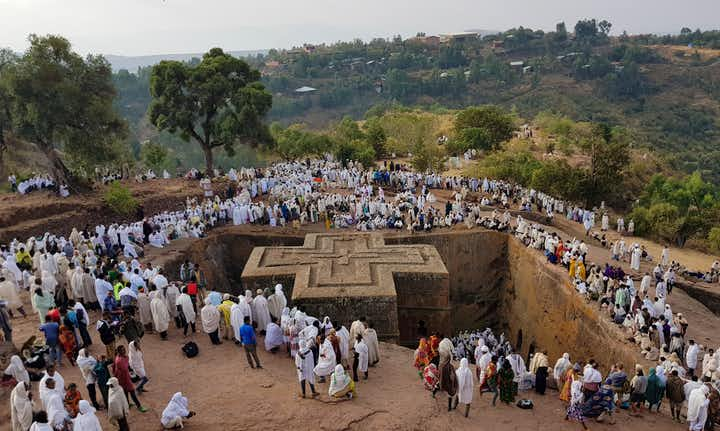Tradition holds that Ethiopia was first evangelized by St. Matthew and St. Bartholomew in the 1st century CE, and the first Ethiopian convert is thought to have been the eunuch in Jerusalem mentioned in The Acts of the Apostles (8:27–40). Ethiopia was further Christianized in the 4th century CE by two men (likely brothers) from Tyre—St. Frumentius, later consecrated the first Ethiopian bishop, and Aedesius. They won the confidence of the king at Aksum (a powerful kingdom in northern Ethiopia) and were allowed to evangelize. The succeeding king, Ezana, was baptized by Frumentius, and Christianity was made the state religion. Toward the end of the 5th century, nine monks from Syria are said to have brought monasticism to Ethiopia and encouraged the translation of the Scriptures into the Geʿez language.
The Christological decision issued by the Council of Chalcedon in 451 CE that the human and divine natures of Jesus Christ were equally present in one person without commingling. Opposed to this dyophysitism, or two-nature doctrine, the Coptic and Ethiopian churches held that the human and divine natures were equally present through the mystery of the Incarnation within a single nature. This position—called miaphysitism, or single-nature doctrine—was interpreted by the Roman and Greek churches as a heresy called monophysitism, the belief that Christ had only one nature, which was divine.
The Ethiopian church included into its name the word tewahedo, a Geʿez word meaning “unity” and expressing the church’s miaphysite belief. Like other so-called non-Chalcedonian (also referred to as Oriental Orthodox) churches, it was cut off from dialogue with the Roman Catholic and Eastern Orthodox churches until the mid-20th century, when many of the Christological disputes that arose from Chalcedon were resolved through ecumenical dialogue.
In the 7th century the conquests of the Muslim Arabs cut off the Ethiopian church from contact with most of its Christian neighbours. The church absorbed various syncretic beliefs in the following centuries, but contact with the outside Christian world was maintained through the Ethiopian monastery in Jerusalem
Beginning in the 12th century, the patriarch of Alexandria appointed the Ethiopian archbishop, known as the abuna (Arabic: “our father”), who was always an Egyptian Coptic monk; this created a rivalry with the native itshage (abbot general) of the strong Ethiopian monastic community. Attempts to shake Egyptian Coptic control were made from time to time, but it was not until 1929 that a compromise was effected: an Egyptian monk was again appointed abuna, but four Ethiopian bishops were also consecrated as his auxiliaries. A native Ethiopian abuna, Basil, was finally appointed in 1950, and in 1959.
Pilgrimage Tour

